Introduction
Welcome to the ultimate guide to transforming your backyard with outdoor metal canopies. These versatile structures, made from materials like aluminum, stainless steel, brass, and copper, offer a blend of functionality and aesthetic appeal. Whether you're looking to create a cozy lounge space or a sheltered area for gatherings, a metal canopy can be the perfect addition. This guide will walk you through understanding the different types of metal canopies, planning your backyard transformation, choosing the right canopy, the installation process, and maintaining your metal canopy for longevity.
Understanding Outdoor Metal Canopies
Outdoor metal canopies are often made from materials like aluminum, stainless steel, brass, and copper. Aluminum is a popular choice due to its lightness, malleability, and resistance to rust. It's also affordable and requires little maintenance. Stainless steel is durable and corrosion-resistant, but requires regular upkeep. Brass and copper are also reliable choices, with copper being corrosion-resistant, malleable, and strong. Brass, a combination of copper and zinc, is often used for decorative pieces. The choice of metal depends on the project's requirements and the desired aesthetic.
Benefits of Metal Canopies
Metal canopies, typically made from sturdy materials like copper or steel, offer a sleek, modern appearance that complements a wide range of architectural styles. They are resistant to harsh weather conditions, including heavy rain and strong winds. Furthermore, metal canopies don't rot, warp, or fade, meaning they can last for many years with minimal maintenance. This makes them a cost-effective choice for homeowners and business owners alike. Additionally, they are relatively low maintenance compared to other materials, requiring no regular painting or staining and can be easily cleaned with a mild soap and water solution.
Types of Metal Canopies
Outdoor metal canopies come in various types, each with unique characteristics. Aluminum, a light and malleable metal that doesn't rust, is a popular choice for canopies due to its affordability and durability. Stainless steel, while durable, requires constant maintenance to maintain its sheen and lifespan. Brass and copper, both resistant to corrosion and durable, are often used for decorative pieces. The choice of metal depends on the project's requirements and the desired aesthetic.
Planning Your Backyard Transformation
Planning your backyard transformation can be an exciting yet daunting task. The first step is to assess your space and identify the areas that need improvement. For instance, a metal awning or canopy can be an eyesore if it's not in good condition. However, instead of replacing it, consider giving it a makeover. A simple DIY project, such as painting the metal canopy, can significantly enhance its appearance. Remember, the goal is to create a cozy, welcoming lounge space that complements the rest of your house. So, don't be afraid to experiment and let your creativity shine.
Assessing Your Space
When assessing your space for an outdoor metal canopy, consider functionality and aesthetics. Ask yourself how the canopy will be used. If you enjoy hosting gatherings, a large canopy may be essential. For quiet relaxation, a smaller, more intimate canopy might be suitable. The visual appeal is also crucial, as it can significantly impact your enjoyment of the area. Consider the local climate and neighborhood characteristics. These factors can significantly impact your ability to enjoy the space and may influence your decision to install a canopy.
Choosing the Right Canopy
When choosing the right canopy, consider factors like functionality, ease of setup, protection, and portability. For instance, a large canopy offers sun protection and is easy to set up despite its size. However, its weight might be a disadvantage for some. A budget-friendly option balances quality and cost, while a lightweight design is ideal for adventurous types. Each canopy has its strengths and weaknesses, so choose one that best suits your needs and environment.
Installation Process
Installing an outdoor metal canopy involves a few crucial steps. Although these canopies are pre-engineered, they require field cutting to match specific conditions. The installation process varies based on the type of canopy, such as overhead supported canopies or mailbox canopies. Additionally, there are sub-assemblies like Styrofoam blockout and foundation installation, metal canopy T-flashing installation, and more. Remember, these instructions are a reference guide, and it's always best to refer to approved shop drawings for project-specific installation details.
DIY Installation Tips
Installing an outdoor metal canopy can be a DIY project, but it requires careful attention to detail. There are reference videos available online to guide you through the process. These videos cover different product offerings and sub-assemblies, including overhead supported canopies and mailbox canopy installations. They also delve into more detailed assemblies such as Styrofoam blockout and foundation installation, metal canopy T-flashing installation, and aluminum canopy systems deflector plate assembly. Remember, these videos are just a reference, always refer to approved shop drawings for project-specific installation detail.
Professional Installation: Pros and Cons
Some types of outdoor metal canopies come 'ready to assemble,' but professional installation is recommended. Quality workmanship directly affects performance and durability, and installing these awnings isn't as simple as it may seem. Despite their strength and longevity, some canopies are not 'decorate-able' beyond custom colors and simple shapes. Therefore, if your design calls for an intricate or elegant effect, these may not be suitable. The choice of canopy is a matter of preference and practicality.
Maintaining Your Metal Canopy
Maintaining your outdoor metal canopy is crucial for its longevity. Regular cleaning, protection from water and snow damage, and general inspections are key. Rinse and wash your canopy regularly to prevent dirt build-up. Ensure water flows off the structure into functional gutters and downspouts. During fall and winter, timely removal of leaves, snow, and ice is necessary. Mildew can be removed using a mild soap solution. Regular maintenance should be completed every 3 months, and in high salinity areas, cleaning should take place at least every 1.5 months.
Routine Cleaning and Care
Maintaining your outdoor metal canopy is crucial for its longevity. Regular cleaning helps preserve the structure's integrity and keeps it looking new. Professional cleaners are equipped with the right tools and solutions to handle any level of dirt, debris, and grime. However, you can also perform simple routine maintenance tasks like regular washing and cleaning to avoid using harsh, abrasive chemicals. It's essential to ensure water flows off the structure and away from the building into functional gutters and downspouts. Regular cleaning of the top of your canopy, beams, and columns can prevent water retention.
Dealing with Weather Damage
Outdoor metal canopies, like any other outdoor structures, can be affected by severe weather conditions. Storms, hail, and high winds can cause significant damage. It's crucial to inspect your canopy after such events, checking for any signs of damage such as dents, loose parts, or structural instability. Prompt repair is essential to prevent further damage and ensure the longevity of your canopy. In cases of extreme damage, you might need to consider a full replacement. Always prioritize safety and consider professional help for major repairs.
Conclusion
In conclusion, outdoor metal canopies are a durable, cost-effective, and aesthetically pleasing solution for transforming your backyard. The choice of metal, type of canopy, and installation method all depend on your specific needs and environment. With careful planning, the right choice of canopy, and regular maintenance, you can create a beautiful, functional outdoor space that will last for years. Whether you're a DIY enthusiast or prefer professional installation, this guide has provided you with the knowledge you need to embark on your backyard transformation journey. Remember, your outdoor space is an extension of your home, and with a metal canopy, you can make it a place of relaxation, entertainment, and enjoyment.



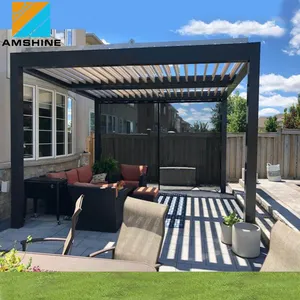

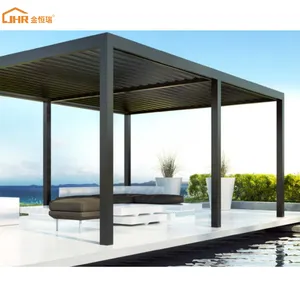



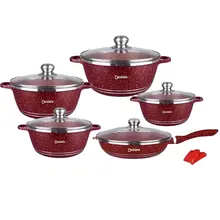


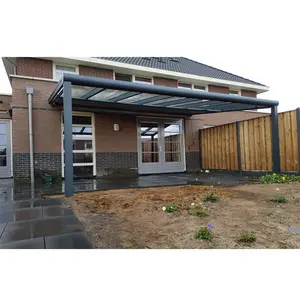



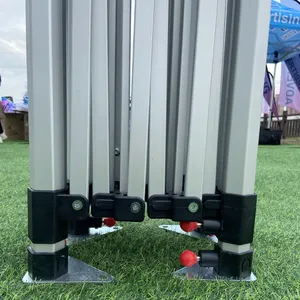






















 浙公网安备 33010002000092号
浙公网安备 33010002000092号 浙B2-20120091-4
浙B2-20120091-4